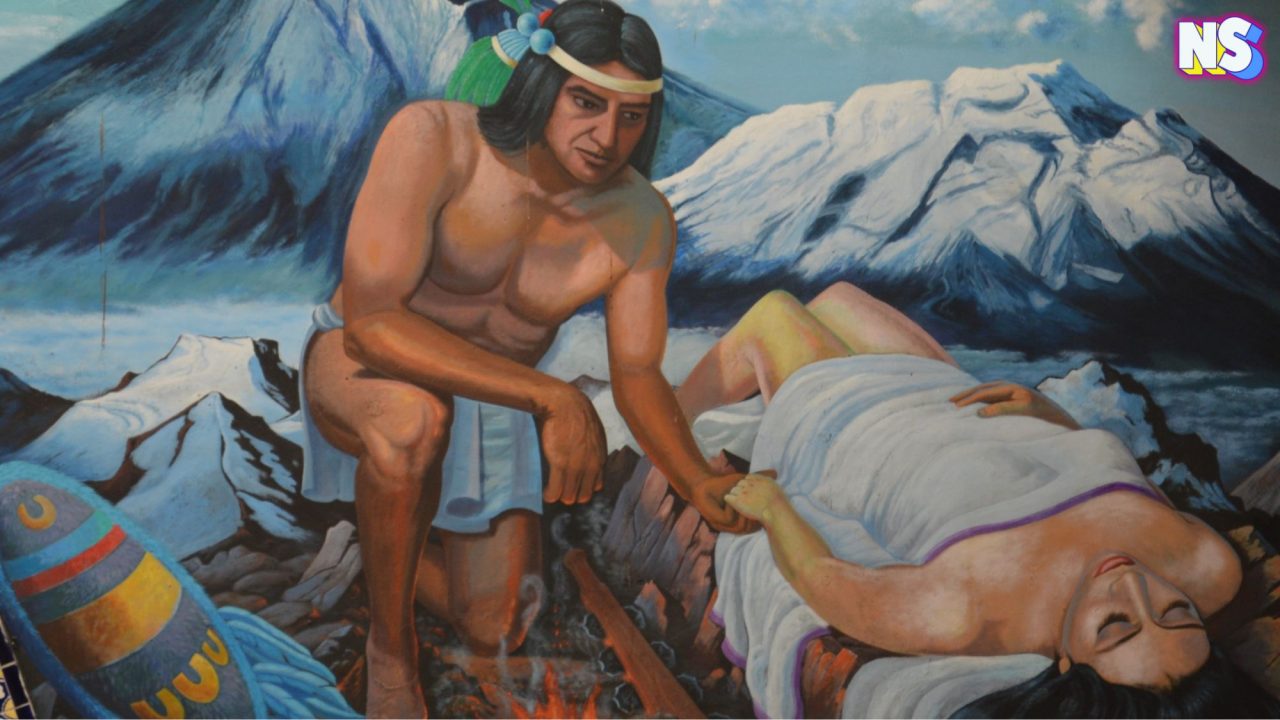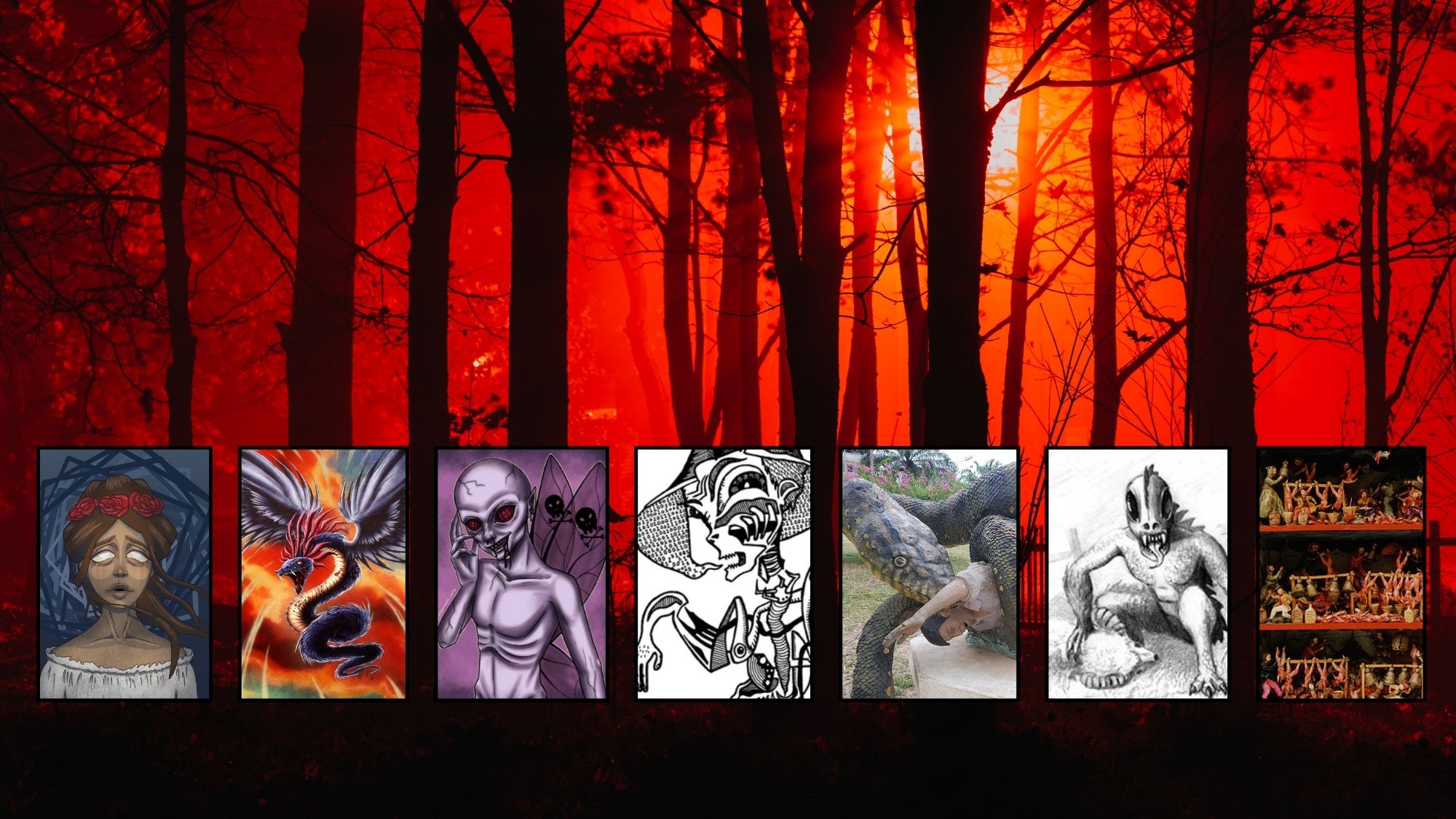In Mexican popular art and Chicano culture, the ancient tale of Iztaccíhuatl and Popocatépetl is seen everywhere. She’s a helpless maiden in a white dress, looked over by a muscular indigenous man.
“It is an image found on calendars, tattoos, t-shirts, velvet paintings and in artwork associated with the lowrider community,” the site Mexico Unexplained writes. “There are songs, children’s books and even an old movie or two to recount the legend.”
Two volcanoes near Mexico City also represent Iztaccíhuatl and Popocatépetl’s legendary love story. Once humans, Iztaccíhuatl and Popocatépetl were transformed into volcanoes, symbols of their eternal love, according to Aztec mythology.
Why is their story so popular?
“The story of Popocatépetl (Popo) and Iztaccihuatl (Izta) is the Aztec Romeo and Juliet, who were denied their love while they lived, but were destined to spend eternity together,” T-Vine explains.
There's is an ancient tale of love, sacrifice, and eternal devotion.
The Beautiful Story of Popocatépetl and Iztaccíhuatl
The origins of this saga trace back long before Hernán Cortés set foot in Mexico, to a time that the Aztecs inhabited Tenochtitlan, their capital. This is when and where the legend flourished.
In ancient Aztec mythology, Iztaccíhuatl was a princess, and Popocatépetl, a valiant warrior. Their love blossomed, and, when asked by Popo, the emperor promised him Iztaccíhuatl’s hand in marriage upon his return from war.
“While Popocatepetl was away at war, one of Iztaccíhuatl’s jealous suitors, Citlaltepetl, told her that Popocatepetl had died in battle. Grief-stricken, Iztaccíhuatl cried until her heart stopped,” Culture Trip explains. “Upon return from battle, finding his beloved dead, Popocatepetl was inconsolable and wandered the streets day and night mourning her.”
In anguish, he carried her to the mountains.
“All the distraught warrior wanted was to honor the love they both had,” the outlet Mexico Unexplained writes. “... He placed the body of his beloved on top of the mountain and fell to his knees. Popo watched over his eternal love with a fiery torch in his hand.”
Then the gods transformed them.
“Centuries passed. They were covered with snow and earth until they became the volcanoes they are today, with Itza in the shape of a reclining woman and Popo a kneeling man,” Culture Trip writes.
Iztaccíhuatl's mountain is called the “Sleeping Woman,” or “Mujer Dormida,” with her snowy form resembling a slumbering maiden. Meanwhile, Popocatépetl is now an active volcano spewing fire, which is said to be a testament to his eternal pain and longing.
The Love Legend and UFO Encounters
In modern times, Iztaccíhuatl and Popocatépetl’s love story has also been tied to another phenomenon: UFO sightings.
In the past few decades, reports have surfaced of unidentified flying craft hovering around the mountains or emerging from the volcanoes themselves.
“Some folklore researchers and even anthropologists claim that the idea of UFOs coming out of volcanoes is related to old indigenous beliefs throughout Mexico that volcanoes serve as passageways to the underworld or portals to other dimensions,” Unexplained Mexico writes. “Some of these UFOS buzzing around Iztaccíhuatl and Popocatépetl have made national TV and have been seen by millions of Mexicans …”
Viewers worldwide follow the Popo and Izta UFO sightings via YouTube.
“In fact, Mexico is seventh in the world when it comes to UFO sightings, with several reported near El Popo each year,” the History Channel reports on its YouTube channel.
Celebrating Popocatépetl and Iztaccíhuatl Today
Today, the tale passed down orally through generations. It’s woven into the cultural fabric, a cherished heritage, and preserved by the Mexican government.
“On 8 November 1935, Mexico’s president, Lázaro Cárdenas (1934–1940), established the Iztaccíhuatl and Popocatépetl National Park, the first of nearly forty national parks created during his term,” The Environment & Society Portal writes.
“Tourists can visit the volcanoes of Popo and Izta, which are less than 100 kilometres from the City of Mexico,” T-Vine explains. “They command the countryside in eternal memory of the Romeo and Juliet of ancient Mexico.”
Couples are invited to visit the park, climb the slopes, whisper sweet promises, and have their love echoing across the peaks.





